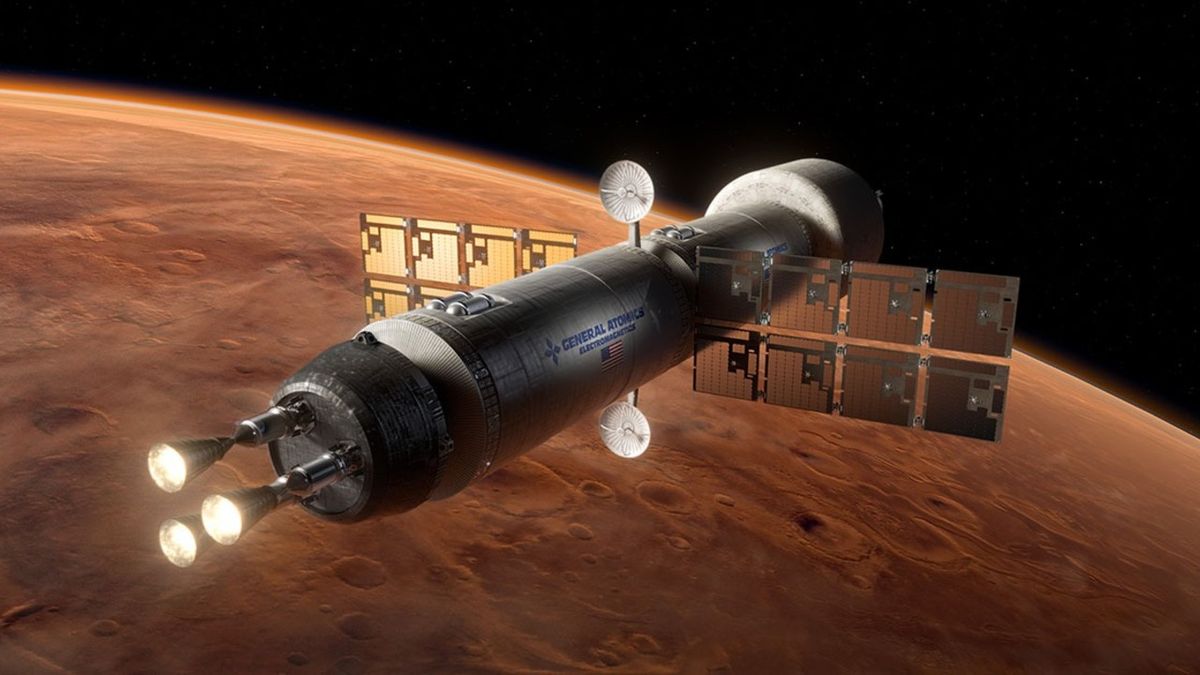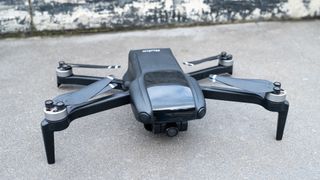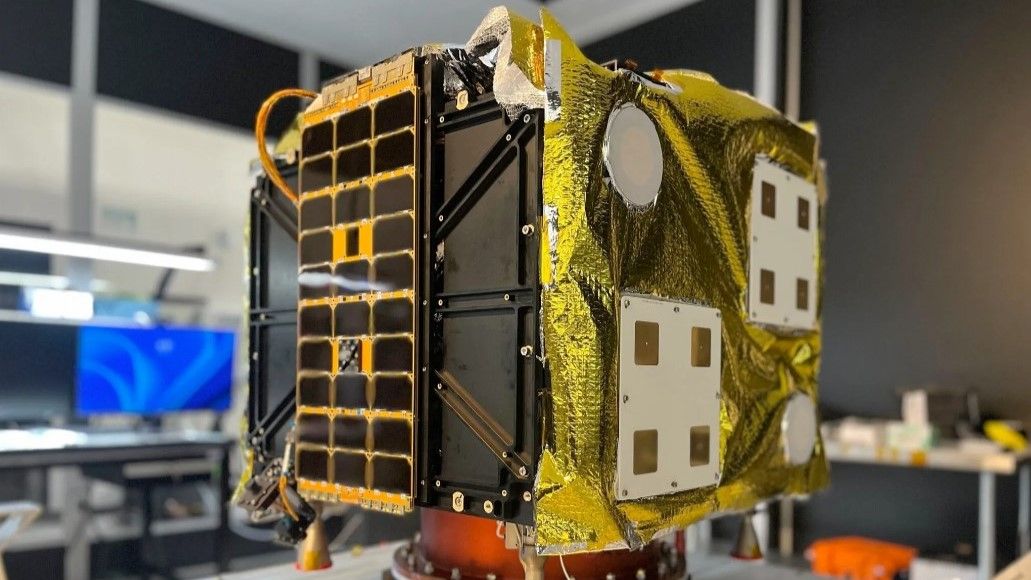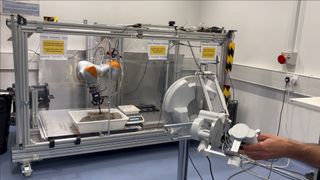The fastest supercomputer in the world has officially launched at the Lawrence Livermore National Laboratory (LNNL) in California. The supercomputer, called “El Capitan,” cost $600 million to build and will handle various sensitive and classified tasks including securing the U.S. stockpile of nuclear weapons in the absence of underground testing, according to LNNL representatives. This was prohibited in 1992. Research will primarily be focused on national security, including material discovery, high-energy-density physics, nuclear data and weapon design, as well as other classified tasks. Construction on the machine began in May…
Read MoreTag: Tech
NASA and General Atomics test nuclear fuel for future moon and Mars missions
The first humans to Mars might someday ride a rocket propelled by a nuclear reactor to their destination. But before that can happen, nuclear thermal propulsion (NTP) technologies still have quite a way to go before we could blast astronauts through space on a nuclear rocket. However, earlier this month, General Atomics Electromagnetic Systems (GA-EMS), in collaboration with NASA, achieved an important milestone on the road to using NTP rockets. At NASA’s Marshall Space Flight Center in Alabama, General Atomics tested a new NTP reactor fuel to find out if…
Read MoreRuko U11MINI drone review
Ruko drones are popular options for beginners, and the Ruko U11MINI is a sub-250 g model that weighs just 8.29 oz / 235 g — one of the lighter drones in this popular category. With some impressive drones released in 2024, the U11MINI does not qualify as one of the best beginner drones because competition in this category has seriously heated up, but it remains an option to consider. Key Specs Weight: 8.29 oz / 235 g Dimensions: 5.55×3.42×2.44 in / 141x87x62 mm folded / 12.71×10.67×2.44 in / 323x271x62 mm…
Read MoreNear Space Labs launches fleet of AI-powered balloon robots to track Earth climate risks
Near Space Labs, a New York-based startup, has deployed a network of high-altitude balloons equipped with advanced robotic cameras to capture high-resolution images of disaster-prone neighborhoods across the United States. With this enhanced imagery, the startup said it aims to accelerate the work of insurance companies that rely on aerial data to assess property risks and respond to damage caused by extreme weather events. The newly deployed balloons are outfitted with AI-enabled robots called “Swifts,” which are capable of capturing imagery with a resolution of 7 centimeters (2.76 inches) per…
Read MoreNASA awards $11.5 million to help design the aircraft of tomorrow
NASA is looking to develop a new generation of low-emission commercial aircraft that will offer a more efficient and sustainable mode of travel. The space agency has commissioned five new design studies as part of its Advanced Aircraft Concepts for Environmental Sustainability (AACES) 2050 initiative. The organizations contributing to new airliner design concepts include Boeing’s Aurora Flight Sciences, the aerospace company Electra, the Georgia Institute of Technology, the aviation startup JetZero and Pratt & Whitney, according to a statement from NASA. “Through initiatives like AACES, NASA is positioned to harness…
Read MoreAsteroid-mining company AstroForge gets 1st-ever FCC license for commercial deep-space mission
Asteroid prospecting company AstroForge has been awarded the first-ever commercial license for operating and communicating with a spacecraft in deep space, ahead of its Odin mission that’s set to launch and rendezvous with a near-Earth asteroid in early 2025. The license, granted by the U.S. Federal Communications Commission (FCC) on Oct. 18, pertains specifically to setting up a communication network with radio ground stations on Earth, to enable commands to be sent up to Odin and data to be transmitted back to Earth. In this case, deep space is defined…
Read MoreSpaceX’s Starlink internet flies on a Boeing 777 jet for the 1st time
SpaceX’s Starlink internet service continues to make inroads around the globe. Starlink provided Wi-Fi on a Boeing 777 jet for the first time today (Oct. 22), during a Qatar Airways flight from the Qatari capital of Doha to London. The 777 is the “largest and longest-range passenger aircraft equipped with Starlink to date,” SpaceX representatives said in an emailed statement today. #QatarAirways launches the world’s first Boeing 777 Starlink-equipped flight. @StarlinkWe are proud to be the airline that leads the way, setting new standards in the airline industry. ✈️#QatarAirwaysStarlink pic.twitter.com/347ZnclANbOctober…
Read MoreRemote-control robots could help humanity explore the moon and Mars
Teleoperated rovers could soon be working on the moon, with human controllers on Earth manipulating the rovers’ tools virtually, allowing for greater dexterity when taking samples, digging or assembling. Researchers from the robotics laboratory at the University of Bristol in England have tested their new teleoperations system at the European Space Agency‘s (ESA) European Centre for Space Applications and Telecommunications at Harwell in Oxfordshire. By controlling a virtual simulation of a rover, they were able to manipulate a robotic arm to dig a sample of pretend lunar regolith (called simulant).…
Read MoreBlowing up: Inflatable space habitats could be key to exploring the solar system
It’s high time to crank up the volume in space! That’s the shout from several private firms that want to see an inflation factor for the future. What is now being evaluated and tested is the use of “softgoods” to fashion inflatable/expandable airlocks and off-Earth habitats, not only for low Earth orbit, but also to provide comfy housing for future moon and Mars explorers. First, however, there’s a memory lane trip about this idea worth taking, one that also underscores how far things have evolved. NASA’s Echo balloon project in…
Read MoreHTC threw us into the Squid Games to preview their new VR headset — the Vive Focus Vision
It’s fair to say that virtual reality has transitioned from a flashy wonder technology of the future into something that we’re just kind of used to. New VR headsets are constantly trickling out, and while some of them cause a big splash because of their outrageous price tag (looking at you Apple Vision Pro), they’ve still yet to truly deliver on the space-age promise of the technology that will help it smash through into the mainstream. Now HTC is here with their latest VR headset — the HTC Vive Focus…
Read More







